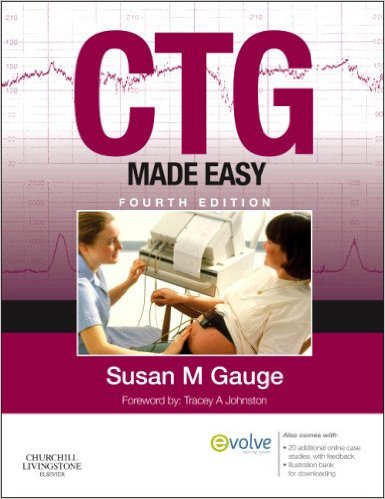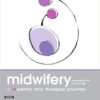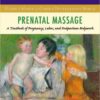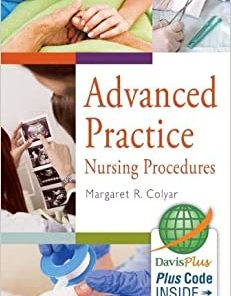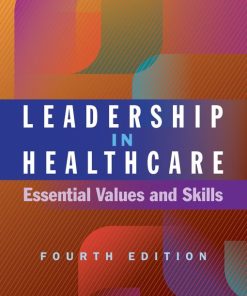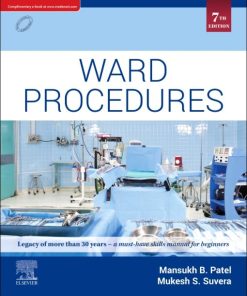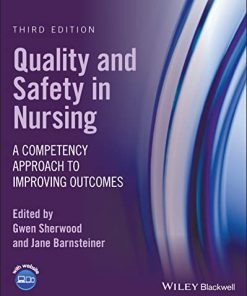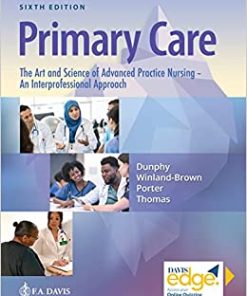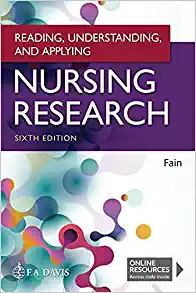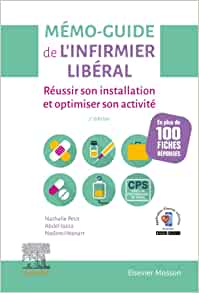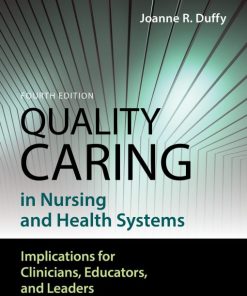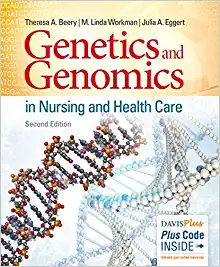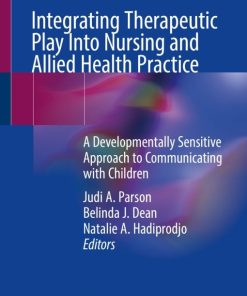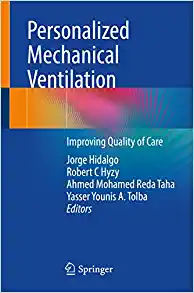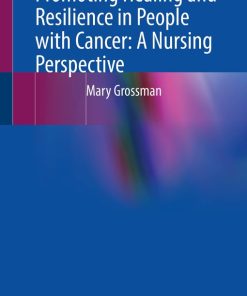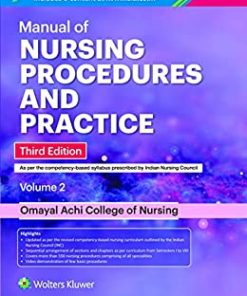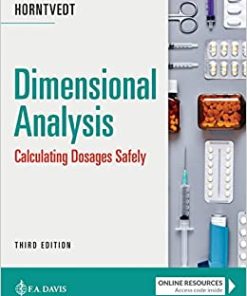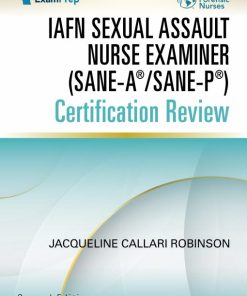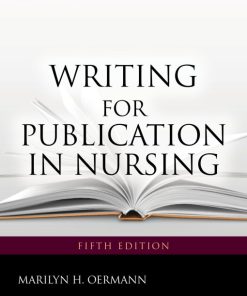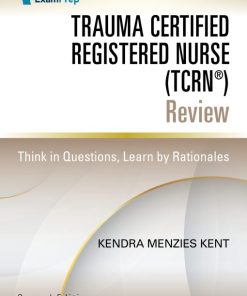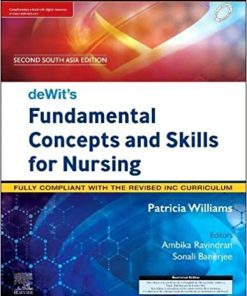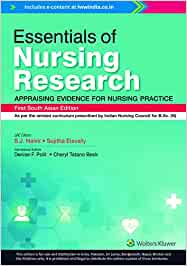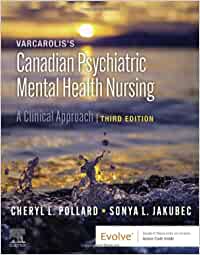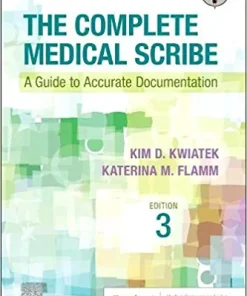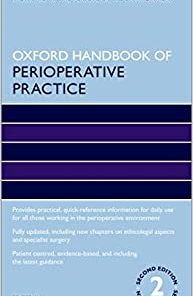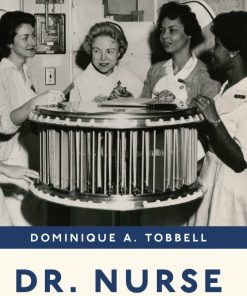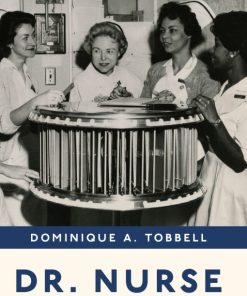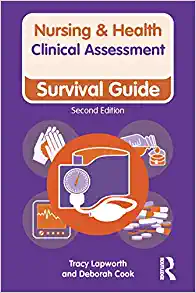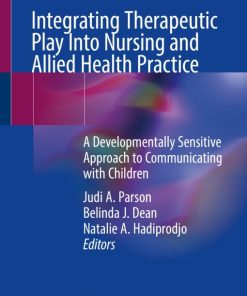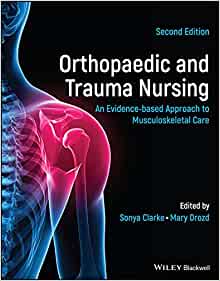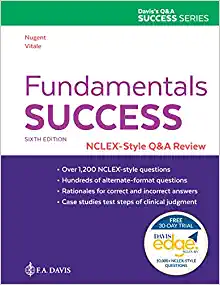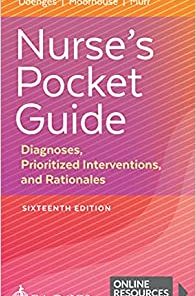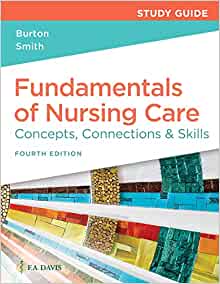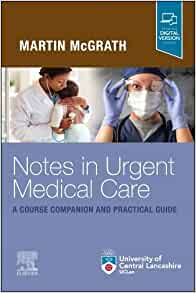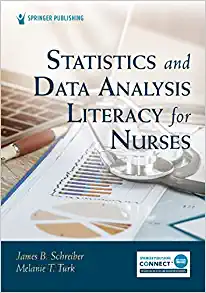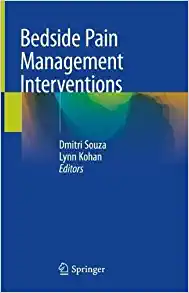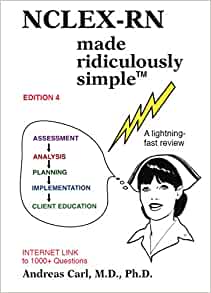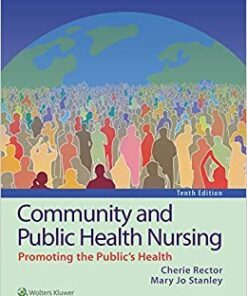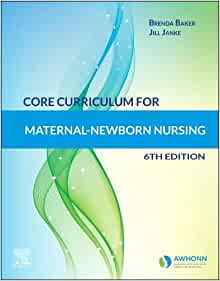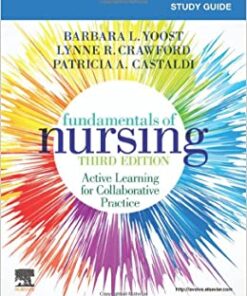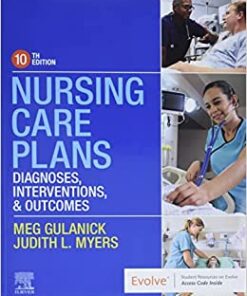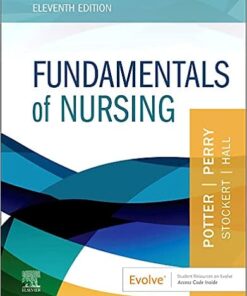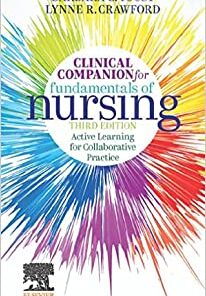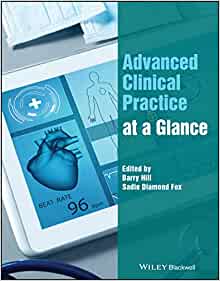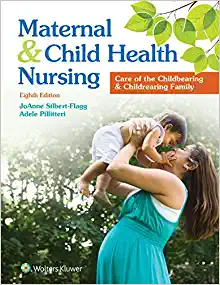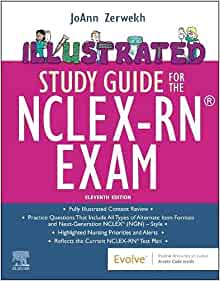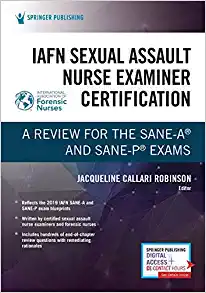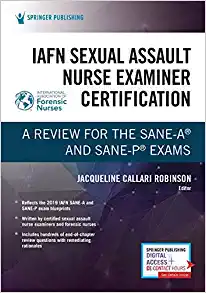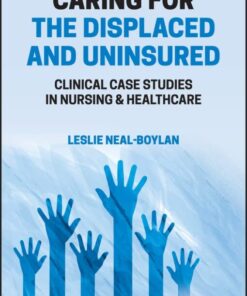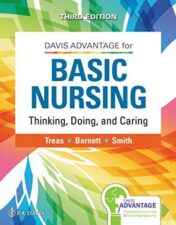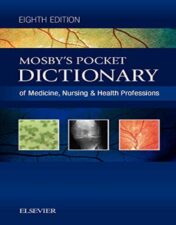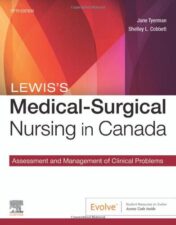- Paperback: 208 pages
- Publisher: Churchill Livingstone; 4 edition (July 10, 2012)
- Language: English
- Type : PDF
-
-
Note : We will send ebook download link after confirmation of payment via paypal success
- Payment methods: Visa or master card (Paypal)
-
Please log in to purchase this product.
CTG Made Easy, 4e 4th Edition
Please log in to view the price.
by Susan Gauge SRN
-
- In-depth debate on choice of intermittent or continuous electronic fetal heart rate monitoring enables correct identification of the appropriate method
- Updated references and recommendations from latest national guidelines ensure readers have access to current research-based evidence and expert opinion
- Clear explanation of the physiology of baseline and periodic abnormalities provides vital information for interpretation and assessment of fetal compromise
- CTG features are described following up-to-date recommendations from NICE
- Charts describe the classification of CTGs and illustrations describe variable decelerations to aid understanding
- Discussion of current adjuncts to electronic fetal heart rate monitoring give the reader insight into current developments and possible future practice
- RCOG and NICE proforma and classifications aid consistency in interpretation and use of terminology
- Recent cases of litigation are used to demonstrate the difficulties encountered with monitoring techniques and interpretation of the data, giving the reader an insight into cases that proceed to litigation
- Evidence relating to fetal monitoring in labour updated to current national guidance
- Expanded section debating the issues surrounding intermittent auscultation versus continuous electronic fetal heart rate monitoring
- Expanded section on the physiological control of the fetal heart rate, fetal blood sampling and acid base balance.
- Risk management updated, including risks and benefits of current methods of fetal heart rate monitoring, future developments, and legal issues
- References comprehensively reviewed, including NICE and RCOG clinical guidelines
CTG Made Easy, 4e 4th Edition
CTG Made Easy 4th edition continues the successful format of previous editions, offering a practical guide to all health professionals involved in monitoring the fetal heart rate during labour, and specifically in the interpretation of CTG traces. The workbook approach remains, with many new and updated case histories and CTGs, all using current terminology and a recommended proforma for interpretation.
The book will aid health professionals to acquire competence and confidence in all aspects of fetal heart rate monitoring during labour, improving the care offered to women and babies.
Product Details |
Related Products
MIDWIFERY & NURSING
MIDWIFERY & NURSING
Leadership in Healthcare: Essential Values and Skills, Fourth Edition (EPUB)
MIDWIFERY & NURSING
MIDWIFERY & NURSING
Fundamentals: Perspectives on the Art and Science of Canadian Nursing, 2nd Edition (EPUB)
MIDWIFERY & NURSING
MIDWIFERY & NURSING
Reflective Practice for Nurses (Student Survival Skills) (Original PDF from Publisher)
MIDWIFERY & NURSING
MIDWIFERY & NURSING
Reading, Understanding, and Applying Nursing Research, 6th Edition (EPUB)
MIDWIFERY & NURSING
MIDWIFERY & NURSING
Quality Caring in Nursing and Health Systems, 4th Edition (Original PDF from Publisher)
MIDWIFERY & NURSING
Genetics and Genomics in Nursing and Health Care, 2nd Edition (EPUB)
MIDWIFERY & NURSING
Pflege bei chronisch-entzündlichen Darmerkrankungen (Original PDF from Publisher)
MIDWIFERY & NURSING
Wege in die generalistische Pflegeausbildung (Original PDF from Publisher)
MIDWIFERY & NURSING
Informal Caregivers: From Hidden Heroes to Integral Part of Care (EPUB)
MIDWIFERY & NURSING
Integrating Therapeutic Play Into Nursing and Allied Health Practice (EPUB)
MIDWIFERY & NURSING
MIDWIFERY & NURSING
Informal Caregivers: From Hidden Heroes to Integral Part of Care (Original PDF from Publisher)
MIDWIFERY & NURSING
Personalized Mechanical Ventilation: Improving Quality of Care (Original PDF from Publisher)
MIDWIFERY & NURSING
MIDWIFERY & NURSING
MIDWIFERY & NURSING
Manual of Nursing Procedures and Practice, 3rd edition, 2 Volume Set (Original PDF from Publisher)
MIDWIFERY & NURSING
MIDWIFERY & NURSING
Dimensional Analysis: Calculating Dosages Safely, Third Edition (EPUB + Converted PDF)
MIDWIFERY & NURSING
MIDWIFERY & NURSING
Writing for Publication in Nursing, 5th Edition (Original PDF from Publisher)
MIDWIFERY & NURSING
Trauma Certified Registered Nurse (TCRN®) Review, 2nd Edition (Original PDF from Publisher)
MIDWIFERY & NURSING
MIDWIFERY & NURSING
deWit’s Fundamental Concepts and Skills for Nursing, 2nd edition, SAE (Original PDF from Publisher)
MIDWIFERY & NURSING
Drain’s PeriAnesthesia Nursing: A Critical Care Approach, 8th Edition (EPUB)
MIDWIFERY & NURSING
MIDWIFERY & NURSING
Varcarolis’s Canadian Psychiatric Mental Health Nursing, 3rd edition (Original PDF from Publisher)
MIDWIFERY & NURSING
MIDWIFERY & NURSING
Oxford Handbook of Perioperative Practice, 2nd Edition (Original PDF from Publisher)
MIDWIFERY & NURSING
MIDWIFERY & NURSING
MIDWIFERY & NURSING
MIDWIFERY & NURSING
Mastering the Art of Patient Care (Original PDF from Publisher)
MIDWIFERY & NURSING
Integrating Therapeutic Play Into Nursing and Allied Health Practice (Original PDF from Publisher)
MIDWIFERY & NURSING
Mental Health Nursing, 6th Edition (Original PDF from Publisher)
MIDWIFERY & NURSING
MIDWIFERY & NURSING
Fundamentals Success: NCLEX®-Style Q&A Review, 6th Edition (Original PDF from Publisher)
MIDWIFERY & NURSING
MIDWIFERY & NURSING
MIDWIFERY & NURSING
Study Guide for Understanding Medical Surgical Nursing, 7th Edition (Original PDF from Publisher)
MIDWIFERY & NURSING
Notes in Urgent Care A Course Companion and Practical Guide (Original PDF from Publisher)
MIDWIFERY & NURSING
História da Enfermagem: Versões e Interpretações, 4th Edition (Original PDF from Publisher)
MIDWIFERY & NURSING
MIDWIFERY & NURSING
Statistics and Data Analysis Literacy for Nurses, 1st edition (Original PDF from Publisher)
MIDWIFERY & NURSING
Bedside Pain Management Interventions, 1st edition (Original PDF from Publisher)
MIDWIFERY & NURSING
Handbook of Medical Law and Ethics for Nurses (Original PDF from Publisher)
MIDWIFERY & NURSING
NCLEX-RN Made Ridiculously Simple, 4th Edition (Original PDF from Publisher)
MIDWIFERY & NURSING
Fiches pratiques IADE: Infirmier anesthésiste, 3e édition (Original PDF from Publisher)
MIDWIFERY & NURSING
Community and Public Health Nursing: Promoting the Public’s Health, 10th Edition (EPUB3)
MIDWIFERY & NURSING
Core Curriculum for Maternal-Newborn Nursing, 6th edition (Original PDF from Publisher)
MIDWIFERY & NURSING
MIDWIFERY & NURSING
Calculation of Drug Dosages: A Work Text,12th edition (Original PDF from Publisher)
MIDWIFERY & NURSING
Study Guide for Fundamentals of Nursing, 3rd edition (Original PDF from Publisher)
MIDWIFERY & NURSING
MIDWIFERY & NURSING
Mosby’s Drug Guide for Nursing Students,15th Edition (Original PDF from Publisher)
MIDWIFERY & NURSING
Fundamentals of Nursing, 11th Edition (Original PDF from Publisher)
MIDWIFERY & NURSING
MIDWIFERY & NURSING
MIDWIFERY & NURSING
MIDWIFERY & NURSING
Illustrated Study Guide for the NCLEX-RN® Exam,11th edition (Original PDF from Publisher)
MIDWIFERY & NURSING
MIDWIFERY & NURSING
IAFN Sexual Assault Nurse Examiner Certification: A Review for the SANE-A® and SANE-P® Exams (EPUB)
MIDWIFERY & NURSING
MIDWIFERY & NURSING
Caring for the Displaced and Uninsured: Clinical Case Studies in Nursing and Healthcare (EPUB)
MIDWIFERY & NURSING
MIDWIFERY & NURSING
Mosby’s Textbook for Nursing Assistants,10th edition 2020 Original PDF
MIDWIFERY & NURSING
MIDWIFERY & NURSING
Ebersole and Hess’ Gerontological Nursing and Healthy Aging in Canada, 3rd Edition 2022 Original PDF
MIDWIFERY & NURSING
Palliative Care Nursing: Caring for Suffering Patients, 2nd Edition 2022 Original PDF
MIDWIFERY & NURSING
MIDWIFERY & NURSING
Clinical Leadership in Nursing and Healthcare, 3rd Edition 2022 Original PDF
MIDWIFERY & NURSING
MIDWIFERY & NURSING
MIDWIFERY & NURSING
Canadian Nursing Health Assessment: A Best Practice Approach, 2nd Edition 2020 Epub+converted pdf
MIDWIFERY & NURSING
MIDWIFERY & NURSING
MIDWIFERY & NURSING
MIDWIFERY & NURSING
Study Guide for Maternal Child Nursing Care, 7th edition 2022 Original PDF
MIDWIFERY & NURSING
MIDWIFERY & NURSING
Nursing: A Concept-Based Approach to Learning, Volume 2, 4th Edition 2022 Original PDF
MIDWIFERY & NURSING
Psychiatric-Mental Health Nursing: From Suffering to Hope, 2nd Edition 2019 Original PDF
MIDWIFERY & NURSING
Nursing: A Concept-Based Approach to Learning, Volume 1, 4th Edition 2022 Original PDF
MIDWIFERY & NURSING
MIDWIFERY & NURSING
Community Health Nursing: A Canadian Perspective, 5th Edition 2019 Original PDF
MIDWIFERY & NURSING
MIDWIFERY & NURSING
Mosby’s Pocket Dictionary of Medicine, Nursing & Health Professions, 8th edition 2016 Original PDF
MIDWIFERY & NURSING
Burns’ Pediatric Primary Care, 7th Edition 2019 Original PDF
MIDWIFERY & NURSING
Neonatal Care for Nurses and Midwives: Principles for Practice, 2nd Edition 2022 Original PDF
MIDWIFERY & NURSING
Pocket Guide for ECGs Made Easy, 7th edition 2022 Original PDF
MIDWIFERY & NURSING
Psychiatric and Mental Health Nursing: The craft of caring, 3rd Edition 2017 Original PDF
MIDWIFERY & NURSING
Psychiatric and Mental Health Nursing: The craft of caring, 3rd Edition 2017 Epub+converted pdf
MIDWIFERY & NURSING
Fundamentals of Critical Care: A Textbook for Nursing and Healthcare Students 2022 Original PDF
MIDWIFERY & NURSING
MIDWIFERY & NURSING
MIDWIFERY & NURSING
Textbook of Mental Health and Psychiatric Nursing 2022 Original PDF
MIDWIFERY & NURSING

